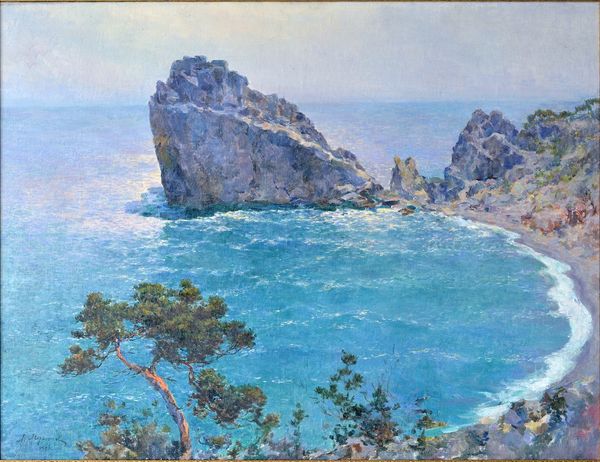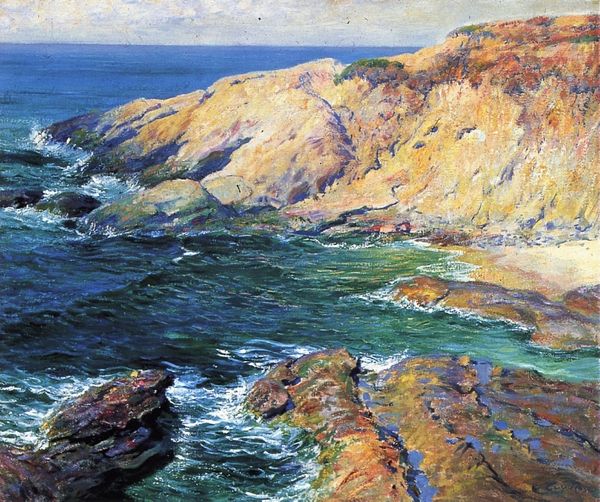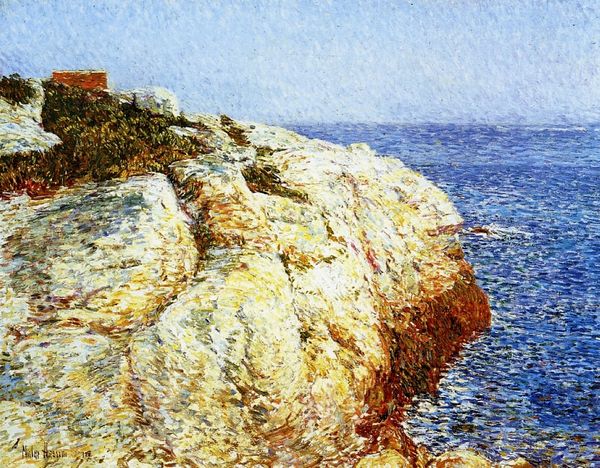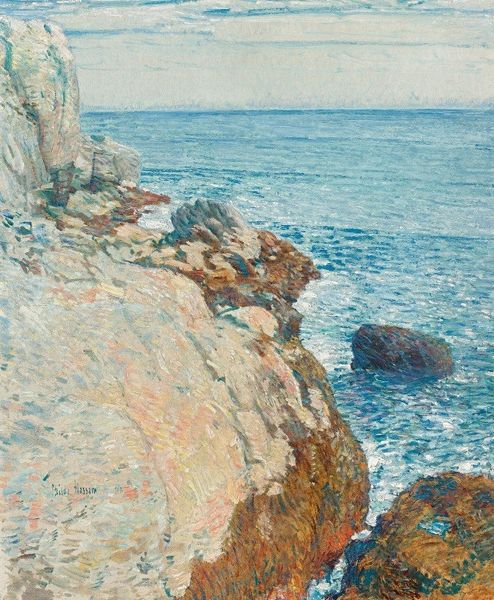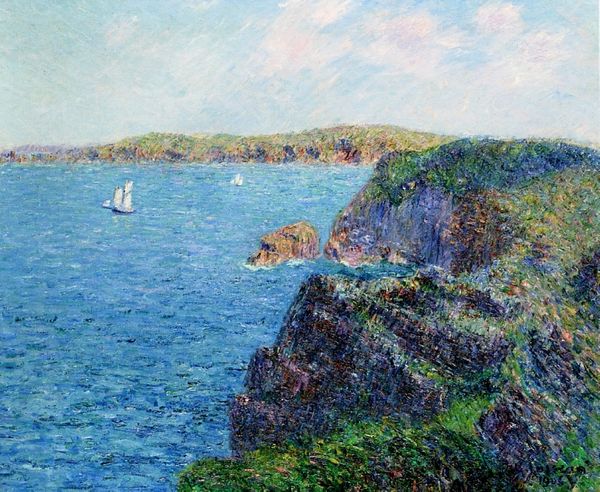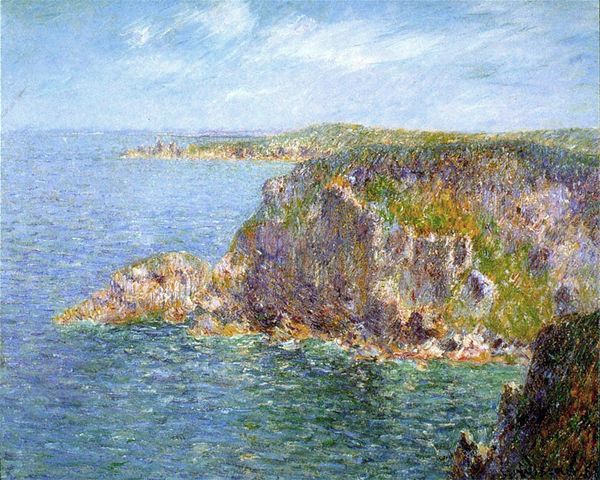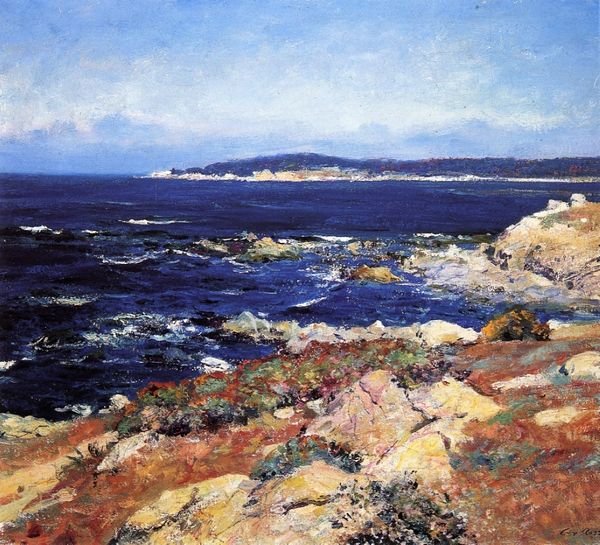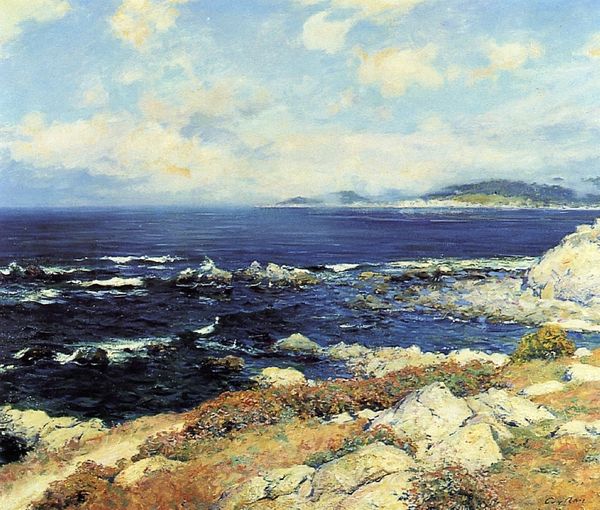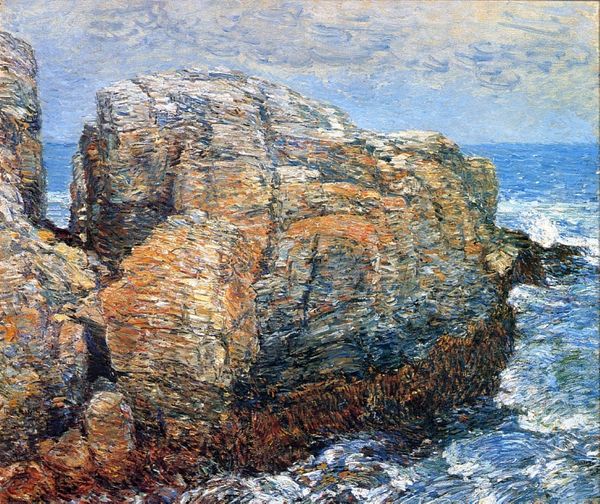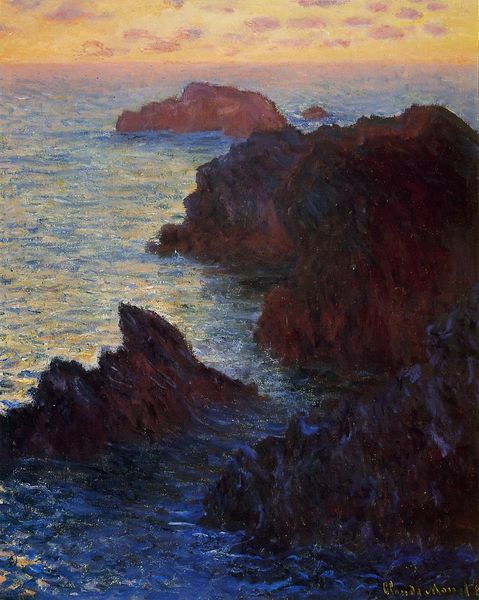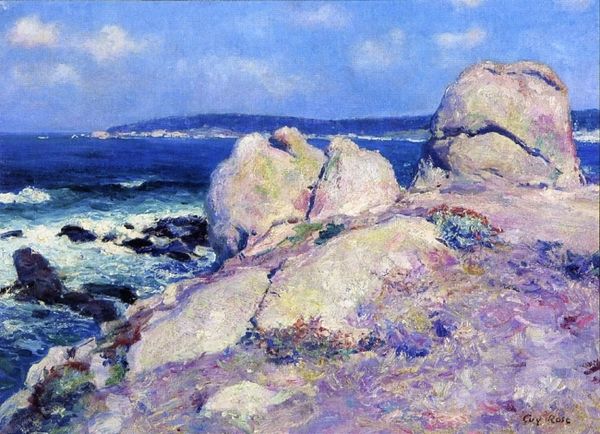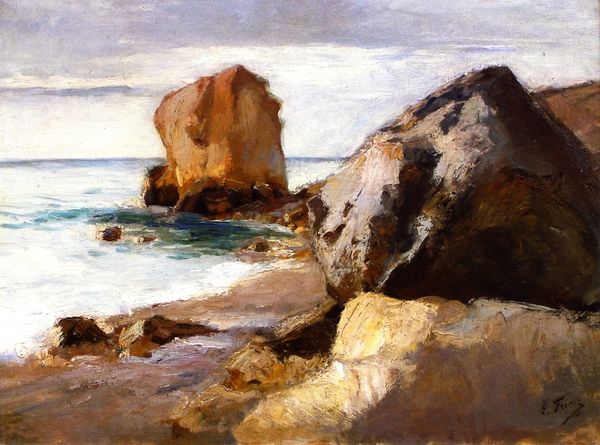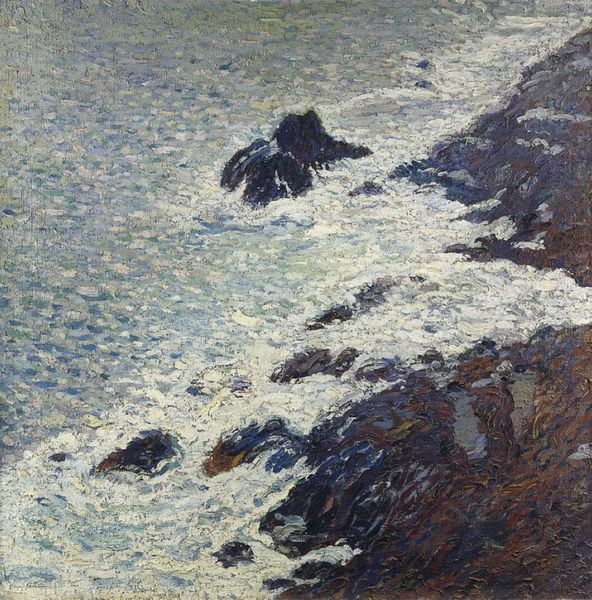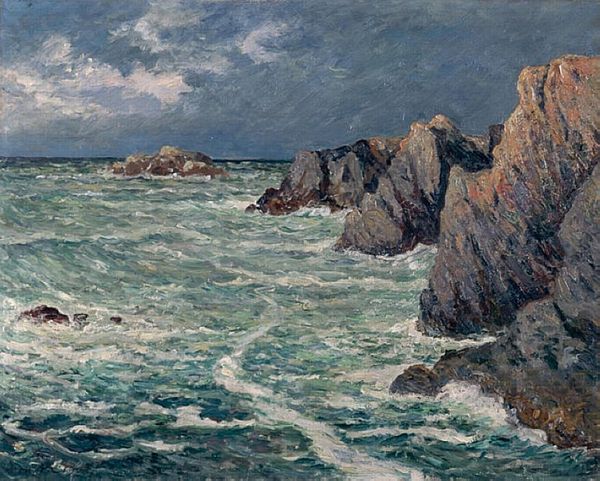
painting, plein-air, oil-paint, impasto
#
tree
#
cliff
#
painting
#
impressionism
#
plein-air
#
oil-paint
#
landscape
#
impressionist landscape
#
nature
#
oil painting
#
impasto
#
ocean
#
rock
#
romanticism
#
seascape
#
water
#
realism
#
sea
Copyright: Public domain
Curator: Before us, we see Rose O'Neill's canvas titled "Point Lobos." O'Neill was, of course, far better known as a commercial artist than a plein-air painter. Editor: This is... surprisingly powerful! The color palette is almost monochromatic – these deep blues and browns – and yet it really evokes a feeling of the rugged Californian coastline. The impasto gives it a tactile, almost sculptural quality. Curator: Indeed, the surface is quite active. The way the paint is applied—thick and gestural—definitely directs our eye, moving us through the composition. The arrangement is interesting, too: these monolithic rocks rise assertively, framing our gaze, before releasing it toward a rather subdued horizon. Editor: Subdued, yes, but think about what that horizon represents, historically and culturally. O'Neill, as a woman artist working in a male-dominated field, would have perhaps felt like those rocks—solid, unyielding, but surrounded by the immensity and sometimes harshness of the art world "ocean." Curator: An intriguing interpretation, but it would be presumptuous to tie the artist’s presumed anxieties so explicitly to the formal elements here. It might serve us better to acknowledge how the tension and the release are rendered by contrasting textures and how the modulation of color temperature serves to articulate spatial recession in the landscape. Editor: Well, and maybe thinking about California itself! Point Lobos represents a very particular kind of beauty, a ruggedness that feels both ancient and incredibly vulnerable in the face of encroaching development and the climate crisis. It resonates in today's world when natural landscapes face existential threats. Curator: Yes, but ultimately the power resides in its ability to evoke the sheer, elemental force of nature. And I’m especially drawn to the composition itself – the interplay between solid forms and liquid space – the painting's capacity to organize itself as a totality of relations. Editor: Perhaps that capacity lies in its surprising resonance with present-day cultural anxieties about nature and agency, a stark representation of something elemental worth fighting for. I certainly found myself more moved than I thought I’d be!
Comments
No comments
Be the first to comment and join the conversation on the ultimate creative platform.
